What's the best hybrid for family use: SUV or estate?
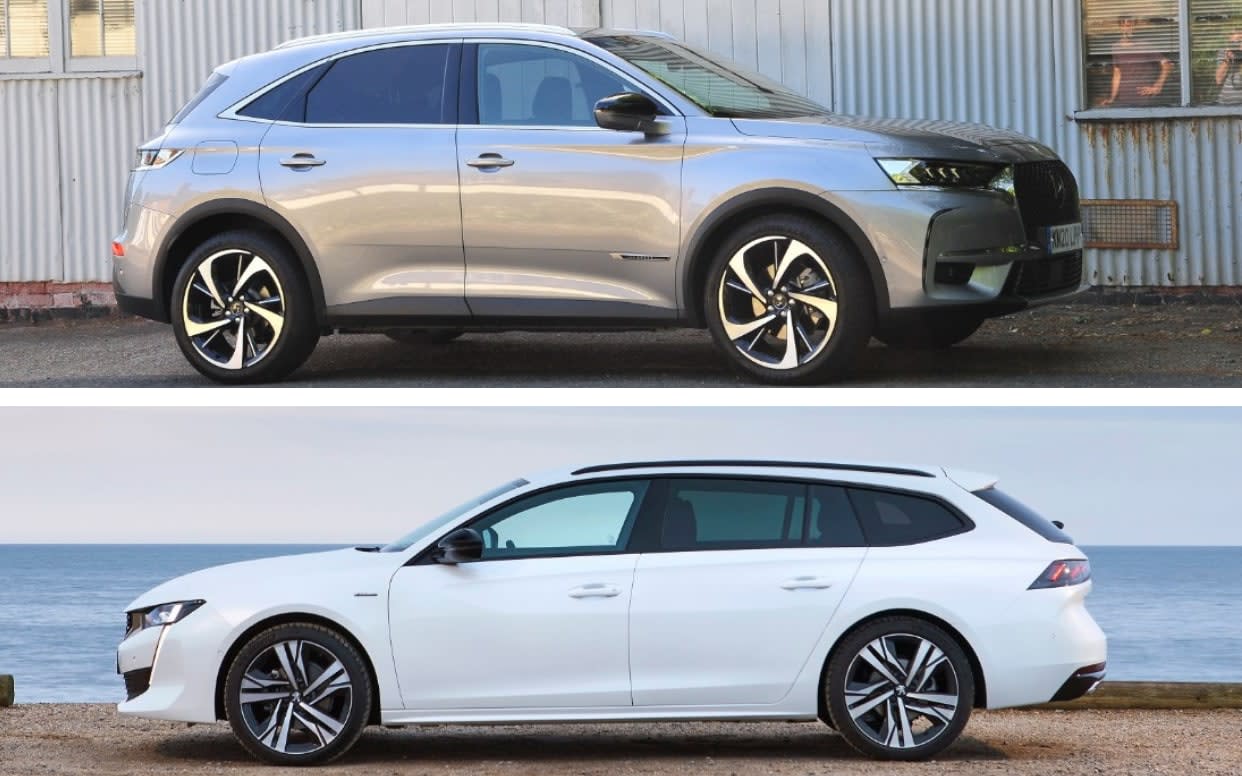
Estate or SUV? It’s unlikely the debate will cease here, but while pre-Covid sales of Sport Utility Vehicles were running out of control in the UK, perhaps as we come out of lockdown we’ll be able to take a more nuanced view on family vehicles.
Maybe six months without the school run will have made us think a bit more seriously about what we really want out of a family car, as well as other things such as the health of the planet, a less visible road presence, or at least a better-looking one.
We’ve pitted a luxury SUV against an estate, both mounted on the same modular chassis floorpan, both with similar plug-in-hybrid (PHEV) drivetrains and both from subsidiaries of the same company. Not an exact head-to-head, but a good illustration of the type of choice there is for premiere-class family transport.
The companies
DS is PSA Peugeot/Citroën’s made-up prestige brand named after the classic DS of 1955. Reborn DS burst on to the scene in 2010 on the rump of the cheeky DS3 warm hatchback. That car did exceptional business in a market looking for a different sort of supermini, which prompted the company to launch DS as a luxury brand.
Was this a wise move? It’s been done before of course, with highly mixed results; Nissan’s Infiniti marque is the latest such venture to have hit the buffers. In Europe (if not in China), DS has made heavy weather of convincing sceptical buyers of the merits of repackaged designer SUVs with a surfeit of diamond motifs in the cabin.
Peugeot is one of the world’s oldest car makers and if its past is glittering, its more recent offerings have been slightly more tarnished, with a reputation for solid-if-unexceptional, badge-engineered fleet contenders.
In the last few years, however, it has done a fair bit to mend that reputation under chief executive Jean-Philippe Imparato and his boss, Carlos Tavares, together with design head Gilles Vidal. The cars are better looking, more reliable and the pricing strategy has been to maximise residual values at the expense of showroom discounts. It’s sort-of working, though the strategy is more successful with some models than others.
The cars
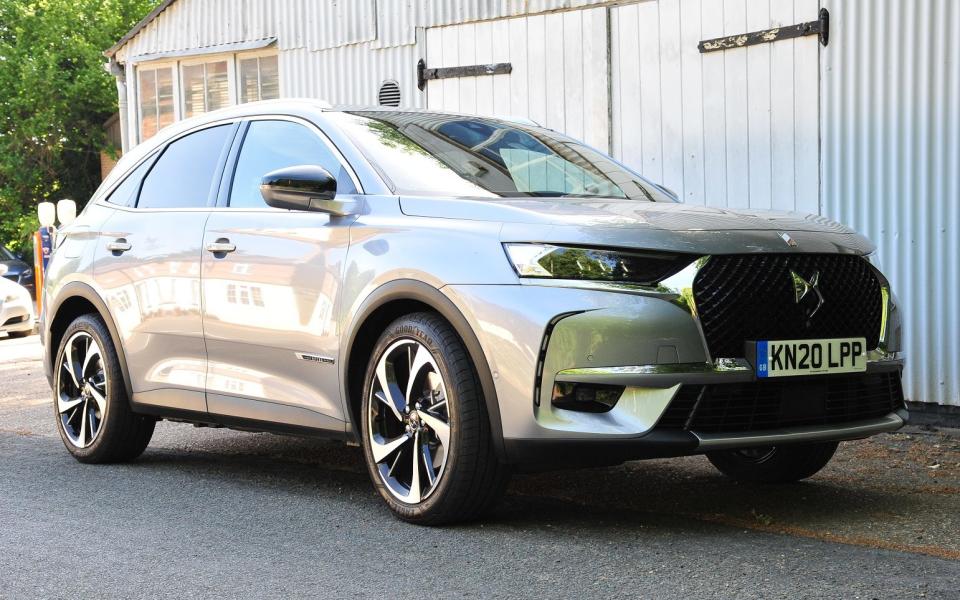
The DS7 Crossback was launched three years ago and is based on PSA's EMP II platform. This 4,573mm-long, five-seat SUV is proportionally and mechanically very similar to its rivals. It’s an all-steel monocoque with front, transverse-mounted engine and transmission, with MacPherson-strut front and multi-link rear suspension.
It’s a bluff-looking thing with an enormous grille and a well-rounded rear, but lacks distinction in the class, which includes Ford’s PHEV Kuga, Peugeot’s own 3008 and the Citroën C5 Aircross. DS would have us believe that it is competing at the top end with BMW’s X3 xDrive30e and Audi’s Q5 TFSIe though that might be in its own fantasy world. In the E-tense 4x4 Ultra Prestige form tested here the DS7 costs £56,075 and £58,920 as tested with the options.

Peugeot’s 508 was launched a couple of years ago and shares the DS’s EMP II underpinnings. It’s 4,778mm long but much lower than the DS (1,420mm compared with 1,625mm). It’s a darn good-looking car deriving much of its styling from the Exalt concept at the 2014 Paris Motor Salon concept.
It comes with a choice of six engines including petrol, diesel and a hybrid, and four trim levels. The PHEV version we’re testing here in Allure trim costs a basic £36,545, with extras taking the price up to £39,420.
The hybrid drivetrain
Both cars share the same basic plug-in hybrid components based on a transverse-mounted turbocharged, 1.6-litre four-cylinder petrol engine sharing the driving duties with an 80kW(109bhp)/249lb ft electric motor (the DS’s 4x4 system has two such motors, each driving the front and rear wheels) and a 300-volt lithium-ion battery under the rear seats, with a capacity of 13.2kWh for the DS and 11.8kWh for the 508.
The 4x4 DS uses a 197bhp/221lb ft version of the 1.6-litre engine, which with its bigger battery gives it a combined total output of 296bhp. It weighs 1,825kg, has a top speed of 149mph and goes from 0-62mph in 5.9sec. Because of the nature of the testing schedule, PHEV published fuel consumption and C02 emissions figures are virtually meaningless; the DS’s are a Combined WLTP economy of up to 235.4mpg, CO2 emissions of 37g/km and an electric-only range of up to 40 miles. Recharging using the standard 7.2kW charger takes 1hr 45min using a home wall box.

The 508 is front-wheel drive and its petrol engine produces 179bhp and 184lb ft. It weighs 1,890kg and with a combined total output from the drivetrain of 222bhp, it has a top speed limited to 155mph (84mph when driving in electric mode), with 0-62mph in 8.3sec, a Combined fuel consumption of 235.4mpg and C02 emissions of 30g/km.
In electric-only mode it will travel 39 miles and a full recharge will take five hours on a 2.3kW household three-pin plug, four hours with a 3.7kW household wallbox and less than two hours if you purchase the optional upgraded 7.4kW Type 2/Mode 3 charger. Peugeot is offering a free wallbox to customers and a free six-month subscription to the Polar charging network.
How suitable for family transport? The DS
Climb into the DS and it’s certainly different, though whether UK buyers will appreciate the comparisons between the opulence of the Palais l’Opéra Garnier built at the behest of Napoleon III in Paris’s 9th arrondissement and this ‘Opera’ upmarket trim level remains to be seen. Opera trim brings a 12.3in digital instrument cluster, the 12in centre touchscreen, a connected sat nav, Apple CarPlay and Android Auto as standard, a Focal hi-fi system, LED lighting as well as the radar-and camera-based automatic braking and lane-keeping safety systems and semi-autonomous driving aids.
All this comes straight out of the PSA prestige parts bin of course, and for that near £60 grand price the DS gets all the bells and whistles although what tiny young fingers would make of the BRM chronograph which swivels out of the dash, or how the quilted Nappa leather seats cope with dropped jam sandwiches, is anyone's guess.
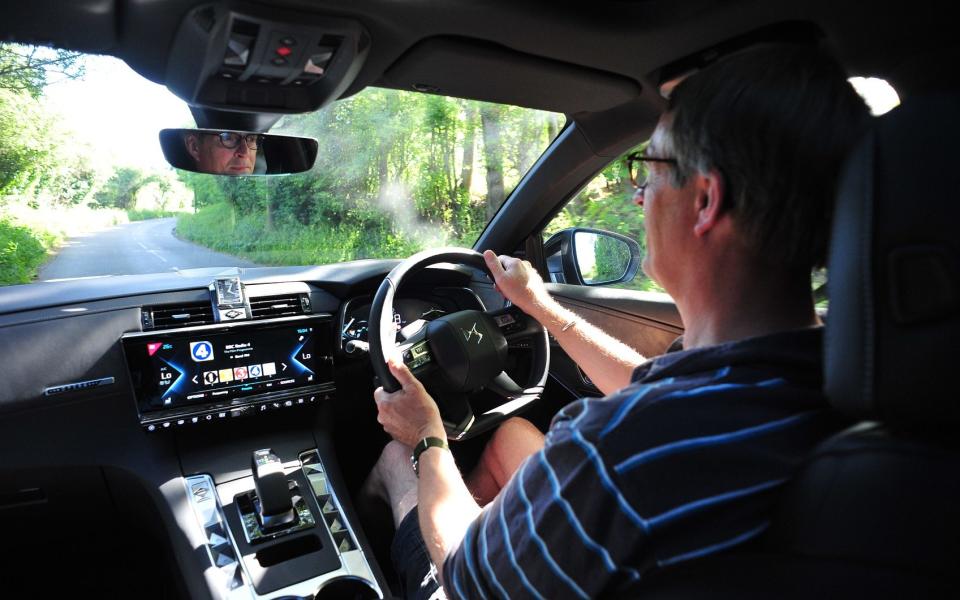
The basic proportions are pretty good though. The PHEV DS7 has luggage capacity unchanged from that of its petrol and diesel counterparts: 628 litres with the rear seats up and 1,752 litres with them folded flat. Like the 508 the rear seats split 60/40 per cent, although some rivals fold with a more versatile 40/20/40 per cent split. Boot space is adjustable, with a false floor under which you can hide the charge cable.
The seating is generous and although the boot floor is high off the ground it’s easy to reach in and grab stuff. The family dog might find it tricky to jump in, though. It’s light and airy in the cabin, with cup holders everywhere and generous storage space around the seats. In the back there’s lots of room and the
first rate panoramic sun roof throws light into the darkest spaces, though it eats into the headroom. That aside, for a long journey, this would be a pretty nice place to sit, with space, comfort and decent views out, though the caveat to that comes in the next section…
How suitable for family transport? The 508
Like the DS, the 508 has exactly the same interior space in hybrid and non-hybrid versions, with a luggage capacity of 530 litres with the rear seats up, 1,780 litres with them folded. In the front seats there’s plenty of leg and head room, with decent amounts of storage space and cup holders even if the glove box is mean. That ‘flying-bridge’ centre console hides a mean single USB charge slot, which isn’t that easy to get to, however.
What brochure figures don’t tell is the thickness of the windscreen pillars and roof cant rails, which means diagonal views out of the driver’s seat are as partially obscured as the theatre’s cheap seats and you have to duck like a handcuffed police suspect to get into the car.

In the back there’s room enough for a couple of six footers, but the head room isn’t generous and that dark upholstery and mean side glass makes it feel a bit claustrophobic.
The boot is fabulously long and low, although it would have been nice if Peugeot could have arranged for a totally flat floor. The space isn’t quite as big as the VW Passat or Skoda Superb estates, but it’s still roomy and the dogs will love leaping in and out. The only trouble is that the low floor means you have to bend down to load, which is exactly what your chiropractor told you not to do.
The driving experience: DS
The 1.6-litre engine in both is gutsy, but not exactly shy and retiring when it’s working hard. Combining electric and combustion power can often be tricky and on the whole Peugeot’s engineers have done a good job with both cars. The step-out of electric power is most noticeable and can be felt as a thump as the engine cuts in. Also, the Aisin eight-speed auto isn’t always as smooth as it could be, but on the whole the complicated driveline makes light work of spiriting you and your family up the road.

Slowing down, however, brings in the perennial bugbear of electric drivetrains, the melding of friction and regeneration braking. Both vehicles tend to slow in steps and clatter to a halt as the regen function fades and the system throws all the braking into the friction linings. Here the DS with its softer suspension suffers most as you feel every watt being fed back into the battery.
The DS comes with the company’s Active suspension as standard. The system works by scanning the road ahead recognising potholes and bumps and slackening off the damping in bump or rebound where appropriate to ease the car's passage. It means that in the standard driving mode the suspension is very soft and that dominates the driving experience.
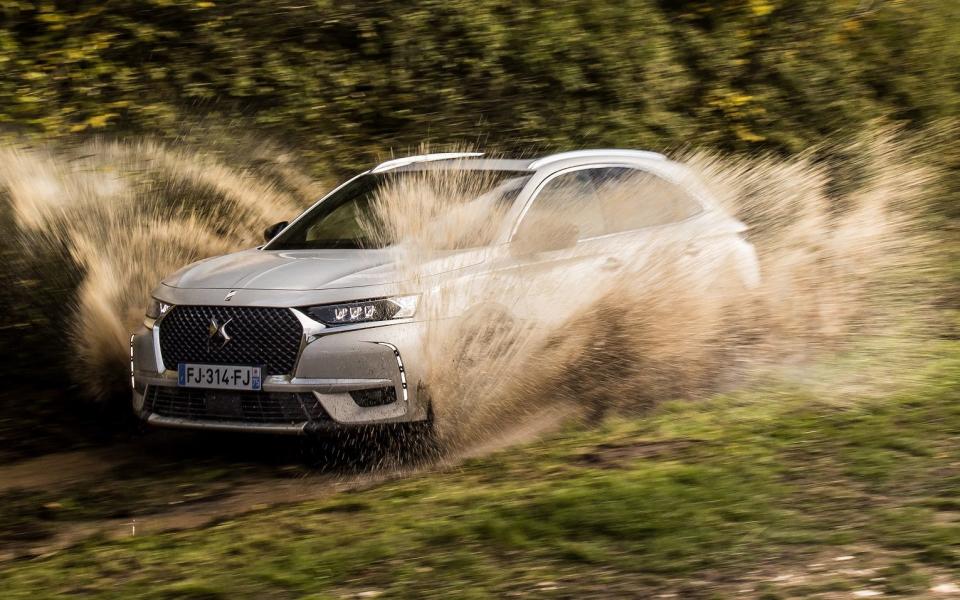
Outside of a classic Citroën and a Sixties American sedan I don’t think I’ve ever experienced as much body movement in a car. Under acceleration this big SUV squats on its rear suspension and under braking it does a fair impression of the Thunderbirds Mole. It rolls through turns and yet still manages to thump through pot holes. Selecting Hybrid or Sport mode switches the active system off and hardens up the body control, but then it’s just another SUV without the precision of PHEV rivals.
The driving experience: 508

The 508 starts from a better place, with firmer suspension settings and more accurate body control. The adaptive dampers can be switched from Eco, Sport, Comfort and Normal, though the ride harshness and steering weight are almost unacceptable in Sport, so for the most part you’d leave the car in Normal.
Peugeot’s small steering wheel layout is loved by some, hated by others, but it does magnify movement, especially with the fast-geared steering rack. The weighting feels inconsistent and it takes a while to get used to the way you need to steer this car through a series of bends.
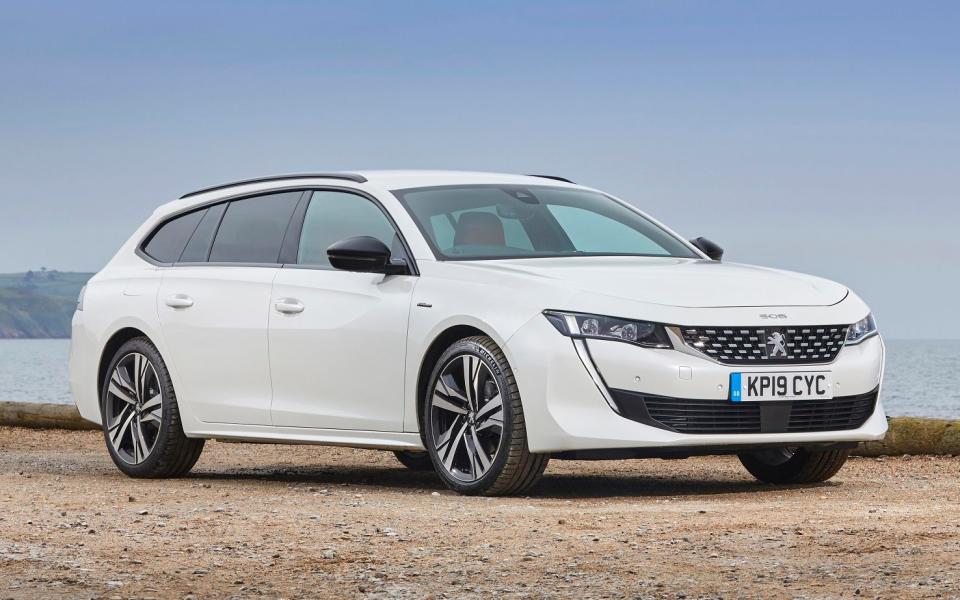
But while it isn’t a dynamic match for estates such as BMW’s 5-series, the 508’s party trick is the effortless way it soaks up miles, with a fine and positive ride quality and a refinement which feels as though you are slipping through the air like a fish in a river.
Conclusion
If it weren’t being compared with an estate car from its own family, the DS7 Crossback would struggle against plug-in hybrid rivals such as the Volvo XC60 T8 or the Audi Q5 TFSIe; it’s not special enough to justify its price tag and the annoying software interfaces in the cabin aren’t worthy of a near-£60,000 car of any origin.

The 508 is closer to its rivals, though PHEV versions of Skoda’s Superb and VW estates put up fine (if slightly dated feeling) opposition, the new Mercedes-Benz E-class PHEV estates are excellent and economical load carriers and BMW will introduce a PHEV 3-series Touring this autumn. The big Peugeot has a style of its own, however and a fantastic gait for long distances although it, too, has PSA’s annoying touchscreen interface and not everyone will learn to live with the small steering wheel.
The bigger question remains; SUV or estate? In that respect you’d have to say that from the driver’s seat the 508 SW is much the better prospect, with fine looks and front-seat accommodation. Its load bed is better for dogs and grandfather clocks and its overall consumption on test of 56mpg was terrific.
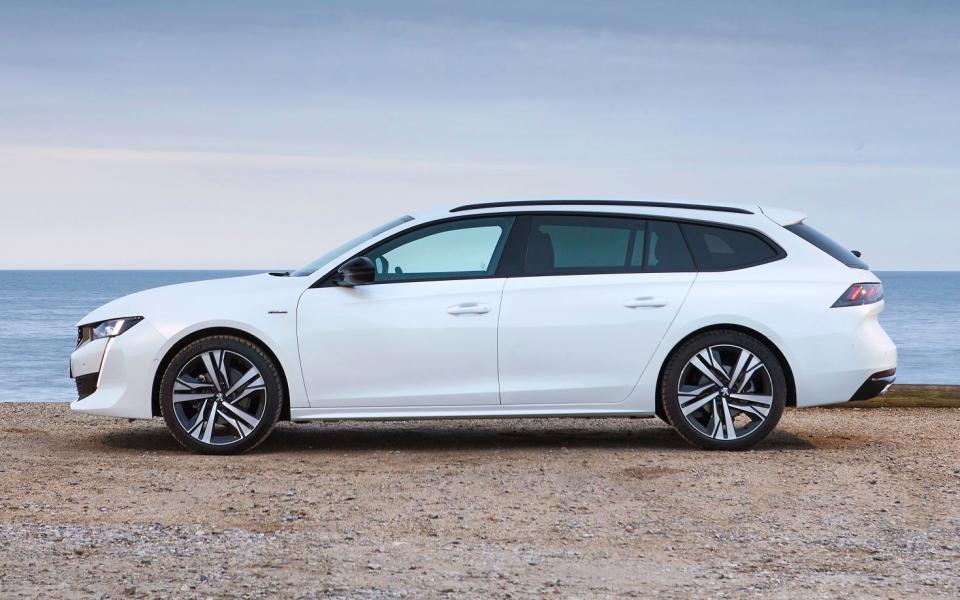
If you are sitting in the back, however, you’d be better off in the DS7 Crossback. It’s brighter, lighter, more spacious and comfortable, though the car’s wallowing handling would induce nausea quite quickly. The higher load bed makes shopping bags easy to load and the 4x4 system is good in snow and ice, although a decent set of winter tyres will get you most places with only front-wheel drive. The cost is prohibitive, however, especially the 43mpg average consumption under similar driving conditions.
I’d take a big estate every time although I can understand why folk take an SUV in preference, though not perhaps the DS7.
For tips and advice, visit our Advice section, or sign up to our newsletter here
To talk all things motoring with the Telegraph Cars team join the Telegraph Motoring Club Facebook group here

 Yahoo News
Yahoo News 
